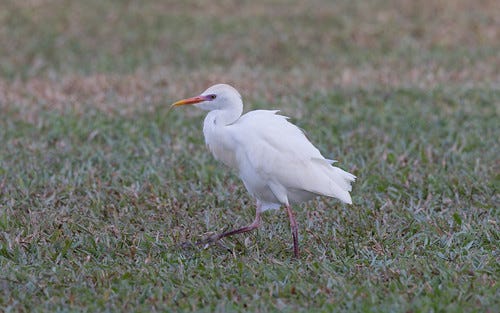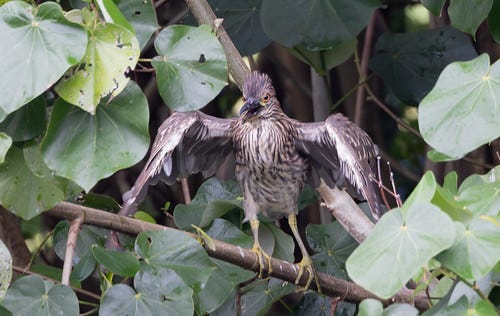(Listen to the radio version here.)
When Russ and I took our kids to Hawaiʻi in 2000, we visited three islands—Maui, the Big Island, and Oʻahu. On our trip this year, we returned to Oʻahu and the Big Island, but did not go to Maui—instead, our tour took us to Kauaʻi. The oldest main island of Hawaiʻi, Kauaʻi is stunningly green, its volcanoes all dormant, with dense forests covering much of the landscape.
After our early morning flight and then breakfast on March 1, we set out for 'Ohiki Road along the Hanalei National Wildlife Refuge and my first looks at wild Nēnē, or Hawaiian Geese, since our family went to Hawaiʻi in 2000. Nēnēs were critically endangered then—few and far between on Maui and Hawaiʻi. Russ and our kids searched relentlessly for one for me, and finally found one lone bird at Volcanoes National Park on the Big Island. At that time, they’d been extirpated from Kauaʻi.
With protection, careful management, captive breeding programs, and reintroductions, now Nēnēs are flourishing and have been reintroduced to Kauaʻi, where we got great looks. We also saw wonderful wetland birds, including the Hawaiian Duck and Hawaiian Coot.
Like the Nēnē, the duck and coot have been separated from the mainland long enough to have become entirely different species from the original colonizing Canada Geese, Mallards, and American Coots.
Western Cattle Egrets and Black-crowned Night-Herons are still considered the same species as those found on the mainland.
The Hawaiian form of the Common Gallinule is considered a different subspecies from the mainland form. It’s critically endangered and I didn’t get to see any in 2000, so I felt very lucky that we saw them on this splendid morning at Hanalei—the only time I saw them on the entire trip.
Wonderful as the wetlands at the refuge were, the biggest highlight of the day was at the northernmost point on Kauaʻi, at the Kīlauea Point National Wildlife Refuge. I can truly say that the hour we spent here was one of the most thrilling hours not just of this trip but of my entire life.
I don’t know how to express just how enthralling it was having so many gorgeous seabirds flying right over our heads, seeing them at close range, from the ethereally beautiful Red-tailed Tropicbirds to the lovely Red-footed Boobies, their serene, gentle expression and grace on the wing belying their name.
Laysan Albatrosses and a few Great Frigatebirds flew over, too.
Realizing that I’d cancelled this trip before my December surgery, expecting the surgery and follow-up cancer treatments to be far far worse than they turned out to be, I could feel tears running down my cheeks to be experiencing all this endless, non-stop beauty. Fortunately, I could still focus my camera. This day was indeed a gift.
We needed a reservation to be at the main overlook at Kīlauea Point and couldn’t linger beyond our allotted time. After lunch we headed to a golf course to see one poor, lost Snow Goose hanging out with a couple dozen Nēnēs, and then worked our way back to our hotel.
Our next day, we started out along Waimea Canyon Drive, getting a glimpse (but no good photo) of a Pueo, the Hawaiian subspecies of our own Short-eared Owl. Then we explored Kauaʻi’s forest birds at Koke'e State Park, where we saw two honeycreepers found only on Kauaʻi—the Kauaʻi ʻAmakihi (which I didn’t get a photo of) and the ʻAnianiau.
We also saw a few of the more widespread Hawaiian honeycreeper, the ‘Apapane. These beautiful birds seem to prefer to always be backlit.
The endemic Kauaʻi ʻElepaio belongs to the Monarch Flycatcher family. It was very active and hard to photograph, but I was very happy to have seen it at all.
We ended our birding day at Salt Pond Beach Park where, of all things, a Gray-tailed Tattler has been hanging out. I got a few distant photos of this unexpected lifer.
That was it for our Kauaʻi adventure—early the next morning we’d catch our flight to the Big Island. But these two intensely joyful days of birding on Kauaʻi filled me with enormous gratitude. What gifts to treasure for a lifetime!

























